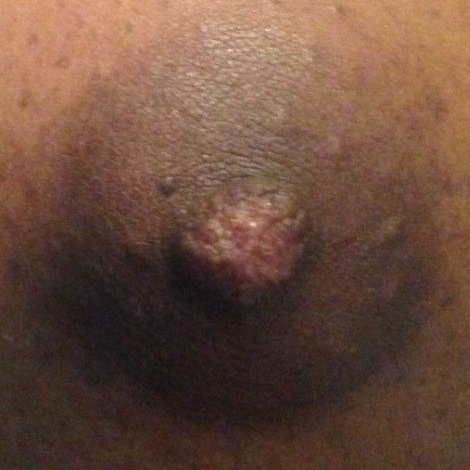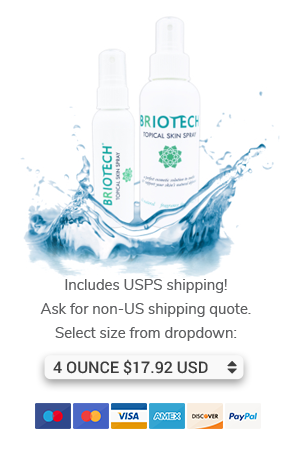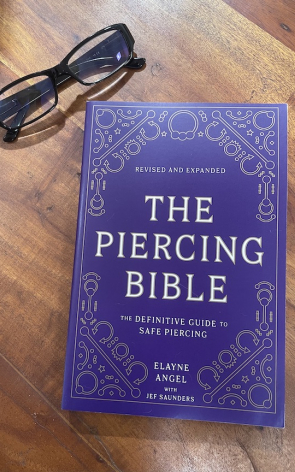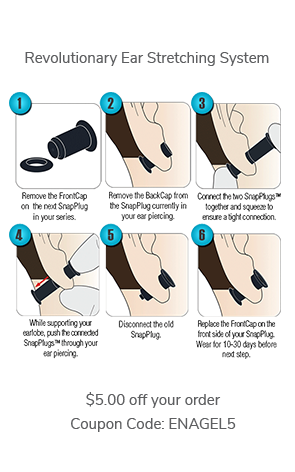I'm often asked whether inverted nipples can be pierced. It is a great question, but the answer is somewhat more involved than a simple “yes” or “no.”
First we need to have a discussion about nipples in general and the condition of inverted nipples, specifically. Nipples come in a tremendous array of sizes and configurations. The “normal” nipple projects to different degrees depending on anatomy and stimulation (including exposure to cold temperatures). Flat nipples usually rest right against the surface of the skin, and inverted nipples are retracted into the breast or chest, rather than protruding. In many cases, the inversion is caused by shortened ducts or other tissue that pulls the tip of the nipple inward.
Medical professionals assess inverted nipples using three different levels of severity:
Grade 1 – The most minor form in which the inverted nipple is easily coaxed out with minimal manipulation. Once out, the nipple maintains its projection fairly well, but usually reverts to its inverted state after a short period of time.
Grade 2 – The inverted nipple can be pulled out, but not as easily as in Grade 1. More forceful manipulation is required to bring it forth, and after releasing the traction, the nipple slips back to its inverted state quickly. The majority of inverted nipples are in this category.
Grade 3 – The nipple is severely inverted and very difficult or impossible to pull out manually. It won’t come out all the way and won’t stay that way on its own.
Some form of this anatomy is very common: as many as 2–10% (some estimates are as high as 20%) of American women have at least one inverted nipple. Men can also have them. Inverted nipples themselves do not usually pose any health risk, although they may cause challenges when trying to nurse an infant, and severe Grade 3 nipples can be prone to infection due to difficulties in maintaining sound hygiene.
Most cases of inverted nipples are congenital; people are just born that way. However, some nipples become inverted after breastfeeding when scar tissue builds up in the milk ducts. Other causes include trauma, surgical scars, major weight loss, breast infection or inflammation, and breast cancer.
Grade 1 anatomy is generally well suited to piercing. Placing jewelry in the right spot is usually an easy and effective cure for the inverted nipple. Grade 2 is harder to deal with, as not all will be good candidates for piercing. These must be carefully evaluated on a case-by-case basis. Grade 3 nipples are not suitable; if the nipple can’t be fully everted (brought out), it can’t be pierced.
If your nipple wasn’t always inverted (and you haven't breastfed or experienced one of the other common causes) you should be seen by a doctor before seeking piercing to rule out a serious health condition. If you are also experiencing a localized rash, discharge, or other skin changes in the area such as flaking or dimpling, you should seek immediate medical attention, as these changes can be caused by cancer. (This is not intended to frighten, nor to diagnose any medical conditions, rather just to offer encouragement to seek prompt evaluation by a doctor if you have such symptoms!)
A hands-on consultation is also in order before your practitioner agrees to pierce an inverted nipple. Your piercer will need to be certain that the skin at the deepest portion of the inversion can be elevated beyond the level of the piercing, or they may end up with a partial piercing that misses the center of the nipple, or a shallow one that migrates through it over time. They will need to manipulate the tissue to be certain they can get it to protrude sufficiently and keep it that way while they perform the procedure. Some easy maneuvers to achieve this include coaxing the nipple out with manual manipulation or by topically applying a cold pack or ice. Gently rolling the tissue between the fingers may do the trick. Sometimes grasping and pinching from the edges of the areola will help to prop the nipple up, but in other anatomy, this pressure causes the tip to retract further. It may take a little time for your piercer to figure out the best approach. If you have any suggestions based on your personal experience, share this information with your piercer.
Note that some inverted nipples will pinch up only at an angle that is not standard for a nipple piercing. It is best to let the tissue be the guide. If you won’t be pleased with a piercing at that angle, you may need to decline to get the piercing.
Whether the piercing is on a well-developed nipple, a flat one, or an inverted one, placement of nipple piercings has the best results when it works with the natural creases and folds of the body. When the tissue is everted, the base of the nipple may be obvious—but on some builds it can be difficult to discern. As a rule I place a nipple piercing with a minimum of 3/8” tissue between the entrance and the exit holes for safety and longevity.
I usually use 12 gauge for the initial jewelry thickness on inverted nipples, if there is sufficient tissue. Grade 2 inverted nipples often swell more than other nipples, and your piercer will need to make certain they're inserting jewelry with enough extra room to allow for that possibility. You can always downsize later.
Barbells (straight or curved) are superior to rings for inverted nipples. I don’t ordinarily put curved bars in fresh nipple piercings, as straight posts are generally better suited to the area. Curved bars can constrict the tissue at entry and exit, much like a ring that is too small in diameter. But with inverted nipples, the curve may conform to the area, with the arc resting back toward the chest. Depending on the amount of force exerted by the tissue to return to its inverted state, this curved jewelry can be more gentle for healing. Once the piercing is well healed, straight barbells can usually be worn, and more correction of the inversion will be seen. (If a curve is inserted initially, the full alteration of the tissue may not be seen until a straight barbell is in place and offers more resistance against the nipple returning to its retracted state.)
Though I commonly use a forceps technique (clamping with a tool to support the nipple for piercing), it is not unusual for inverted anatomy to require a freehand technique. Sometimes the clamps just won't go on in the right position.
If you have undergone surgery to correct an inversion, I’d suggest waiting for at least a year before considering nipple piercing. Waiting two years is even safer. Post-surgical anatomy of any type is generally slower to heal due to diminished blood supply, and scar tissue has only about 80% of the strength of normal skin.
Nipple piercings routinely take six months or longer to heal. Since the jewelry can exert pressure against inverted tissue, they might take even longer than usual to heal. If you believe you're experiencing migration (movement of the piercing from its original location), or any other complication, contact your piercer right away!
It is critical that your piercer has an abundance of experience if you have challenging anatomy, including inverted nipples. You can check my referrals list for the best piercers I know. I hope this information will help you to make good decisions about whether or not to seek piercing on inverted nipple(s), and what to expect if you proceed.
If you wish to have an online (photo) consultation with me for your anatomy, you can sign up for an anatomy consult here. If you're having problems with an existing piercing, I also offer online piercing problem consultations.






